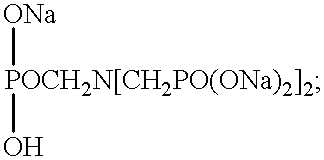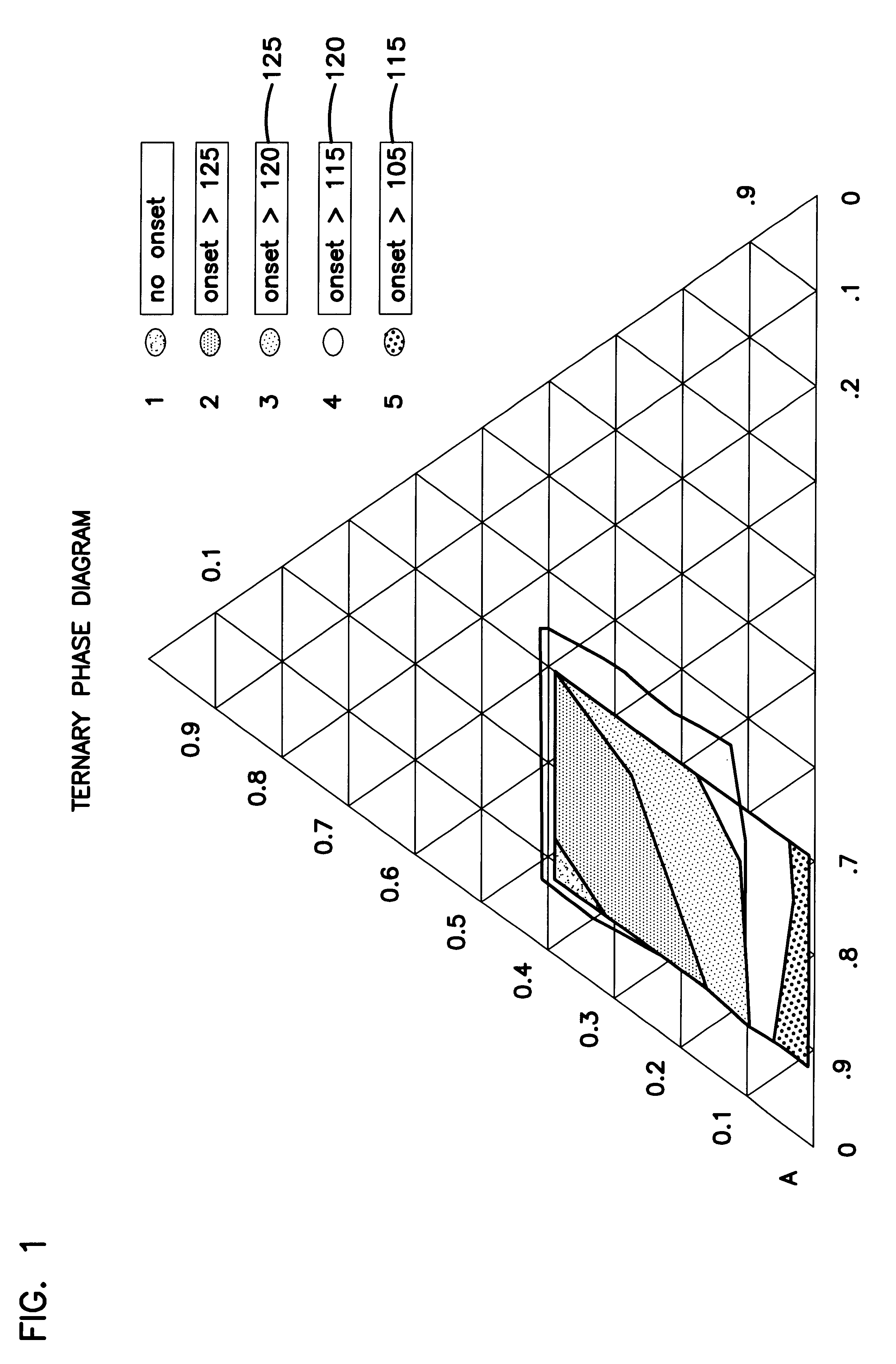Stable solid block detergent composition
a detergent composition and solid block technology, applied in detergent compounding agents, inorganic non-surface active detergent compositions, group 5/15 element organic compounds, etc., can solve the problems of insufficient solidification, hydroxide interference with solidification, and product resembling wet concrete, paste or mush
- Summary
- Abstract
- Description
- Claims
- Application Information
AI Technical Summary
Benefits of technology
Problems solved by technology
Method used
Image
Examples
example 2
The next example is an example of a warewashing detergent produced in a 5" Teledyne paste processor. The premix was made of Surfactant Premix 3 (which is 84% nonionic a pluronic type nonionic and 16% of a mixed mono-and di (about C.sub.16) alkyl phosphate ester with large granular sodium tripolyphosphate and spray dried ATMP (aminotri(methylene phosphonic acid). The ATMP sprayed dried was neutralized prior to spray drying to a pH of 12-13. The purpose of this premix is to make a uniform material to be fed to the Teledyne without segregation occurring. The formula for this experiment is as follows:
The dye, which is Direct Blue 86 was premixed in the mix tank with the soft water. Production rate for this experiment was 30 lbs / minute and a 350 lb. batch was made. The molar ratio of water to ash was 1.3 for this experiment. The Teledyne process extruder was equipped with a 51 / 2" round elbow and straight sanitary pipe fitting at the discharge. Blocks were cut into approximately 3 lb. blo...
example 3
Laboratory samples were made up to determine the phase diagram of ATMP, sodium carbonate and water. The spray dried neutralized version of ATMP used in Example 2 is the same material that is used in this experiment. Anhydrous light density carbonate (FMC grade 100) and water were used for the other ingredients. These mixtures were allowed to react and equilibrate in a 38.degree. C. (100.degree. F.) oven overnight. The samples were then analyzed by DSC to determine the onset of the hydration decomposition spike for each sample. The results of these experiments was a phase diagram which can be seen in FIG. 1. A shift in the onset of the hydrate decomposition temperature as ATMP is added to the mixtures seen. The normal monohydrated ash spike is seen at very low levels of ATMP. But with increased amounts of ATMP, a region of larger proportions of a more stable E-form hydrate binding agent which we believe to be a complex of ATMP, water and ash, is found. We also believe that this is a ...
example 4
For this experiment we ran the same experiment as Example 3 except that Bayhibit AM (which is 2-phosphonobutane-1,2,4-tricarboxylic acid) was substituted for the ATMP. The material used was neutralized to a pH of 12-13 and dried. Mixtures of this material, ash and water, were then prepared and allowed to be equilibrated overnight in a 100.degree. F. oven. Samples were then analyzed by DSE for the onset of hydration decomposition temperature. This system gave comparable results with a higher onset of hydration decomposition.
At this time we believe that an improved extruded ash based solid can be obtained by adding a phosphonate to the formula. We believe that the phosphonates, ash, water E-form complex is the main method of solidification for these systems. This is a superior solidification system to extant monohydrate of ash since it provides a much harder, stronger solid and less prone to cracking and swelling.
PUM
 Login to View More
Login to View More Abstract
Description
Claims
Application Information
 Login to View More
Login to View More - R&D
- Intellectual Property
- Life Sciences
- Materials
- Tech Scout
- Unparalleled Data Quality
- Higher Quality Content
- 60% Fewer Hallucinations
Browse by: Latest US Patents, China's latest patents, Technical Efficacy Thesaurus, Application Domain, Technology Topic, Popular Technical Reports.
© 2025 PatSnap. All rights reserved.Legal|Privacy policy|Modern Slavery Act Transparency Statement|Sitemap|About US| Contact US: help@patsnap.com



